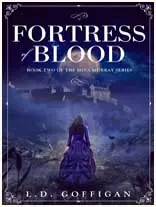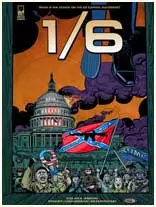Which Two Factors Combine To Form An Author's Purpose For Writing A Text?

Ever have a text fool you? Have you ever come across anything that confused you or completed a work and thought you had no idea what to do next? Have you ever turned over a great book and pondered what motivated the writer to create that universe? Was there something more buried in the pages, or was it to provide an amazing escape? Although you might have laughed aloud at a humorous piece, have you thought about why the author penned it? Was it supposed to persuade you to consider things differently or merely to make you laugh?
Every work of writing has a secret code buried inside it. Though it's not invisible, this code nonetheless contains invisible ink. Breaking this code will help you to learn why the author wrote what they did and what they wanted you to obtain from their work.
An author's goal has historically been divided into three primary categories:
- Persuade
- Inform
- Entertain
These organizations are a great place to start, but they don't address all the factors behind people's writing.
But we'll enter the inner minds of writers and learn why they wrote what they did. We will discuss the conventional three uses as well as a variety of different ones like expressing emotions, teaching, and even parodies. This will equip you to decipher any book you come across.
The PIE Method
The PIE approach helps one to define the goal of an author. It represents:
1. Persuade
The author wants to persuade readers of one point of view or course of action.
Persuasive books act as arguments, therefore offering a case to change the reader's viewpoint or conduct. They frequently back up their assertions with proof, logical arguments, and emotive pleas.
Search for strong language like "should," "must," or assertions stressing the advantages of a given activity. Many times, persuasive texts end with an obvious call to action.
A political speech calling for supporters of a certain candidate, for instance, might
2. Inform
With her factual facts, the author mostly wants to teach the reader.
Informative books are knowledge sources that deepen the grasp of a certain topic by the reader. They frequently feature thorough explanations, data, and breakdown of difficult ideas.
Look for keywords like "because," "to," or phrases introducing facts and figures. In their presentation, informative books are objective and unbiased.
A scholarly journal article about the most recent studies on climate change, for instance.
3. Entertain
With this passage, the author hopes to entertain or involve the reader using humor, creative expression, or narrative.
Entertaining books gives the reader's experience pleasure first priority. To keep you engaged, they could use suspense, comedy, rich descriptions, or gripping storylines.
Search for components including metaphorical language, conversation, and a focus on story development that keeps the narrative flowing. Reading entertaining books usually makes the reader strongly emotional.
For instance, this is a fantasy book with legendary animals and big missions that makes you tense.
Beyond the PIE
Although the author's PIE offers a useful framework, writers can have goals in literature outside of these three spheres. Here is a view of authorial intent taken holistically:
4. Express Feelings
Writing serves the author also as a cathartic release for sharing experiences, investigating personal ideas, or just letting out feelings.
Personal essays, poetry, and journals all frequently serve this goal. The author's inner world and their original viewpoint on events of life take the stage.
For instance, the poem is full of raw feeling that captures the author's loss following a personal death.
5. Describe
The author wants to vividly depict with words a sensory experience for the reader.
Rich language used in descriptive works appeals to the five senses: sight, hearing, smell, touch, and taste, therefore enveloping the reader into the scenario.
For instance, a travel blog article capturing the sights, sounds, and smells of a busy marketplace in a faraway nation uses rich descriptions.
6. Satirize
The author exposes and questions social inequalities or shortcomings using comedy, irony, or hyperbole.
Satirical books frequently use sarcasm, wit, and caricature to expose ridiculousness in a way that makes us laugh and forces critical thought.
One political cartoon, for instance, utilizes humor to parody a dishonest politician.
7. Instruct
The author wants to offer detailed, methodical directions on finishing a project.
Usually straightforward and succinct, instructional books provide a disciplined means of reaching a given objective. For easier grasp, they frequently use numbered lists, bullet points, and images.
One recipe, for instance, offers precise directions on how to create a mouthwatering cake.
8. Analyze
Usually offering several points of view and arguments, the author closely investigates a topic or situation. They can want to provide a fresh view of an old concept or break out a difficult problem.
An article in literary criticism, for instance, examining the symbols and themes found in a book.
9. Celebrate
The author expresses delight, marks a celebration, or honors someone or something in her work.
A poem honoring the wonders of the natural world or a personal essay penned in remembrance of a loved one, for instance.
10. Inspire
The author wants to inspire or raise the reader so they might follow a specific dream or act.
A motivating speech given by a successful entrepreneur, for instance.
Which article is most likely written to persuade readers?
"Manners Make the Man" is most likely meant to influence readers.
This is the reason:
- Effective writing seeks to persuade readers of a specific point of view. Titles like "Manners Make the Man," which openly express an opinion or value judgment, usually indicate this goal.
- Like "The History of Dinner Etiquette," informative titles emphasize knowledge above persuasion of change in readers' opinions.
- Titles like "Five One-Dish Dinners," which emphasize amusement or practicality, are less likely to have a persuasive intent.
Naturally, only the title is not definite. Still, "Manners Make the Man" is trying to persuade you of the need of manners, and this is a crucial hint.
Conclusion:
Thinking through these different objectives helps you to appreciate the range of motives behind the work of authors. Remember that often determining what an author wants to express requires some detective effort. Search the text for hints. Consider the general language, tone, style, and topic. With some work, you will be able to determine the author's goal!
limited Time offer
- 00
- 00
- 2





